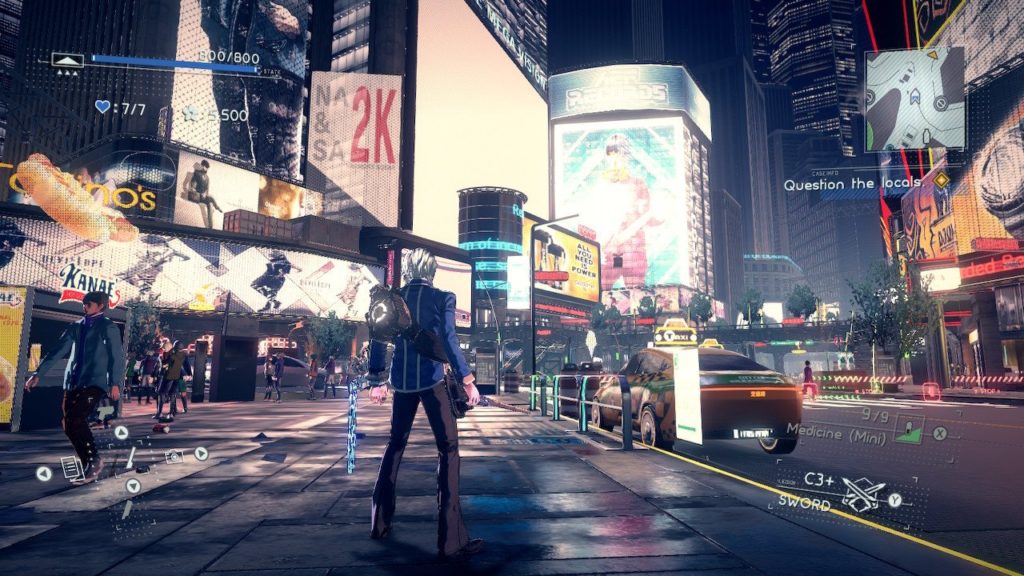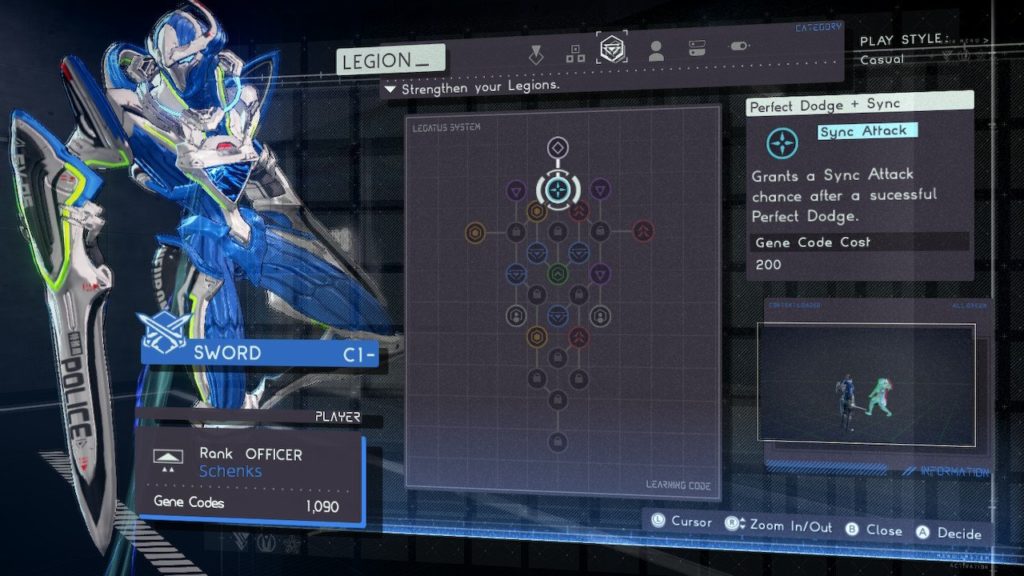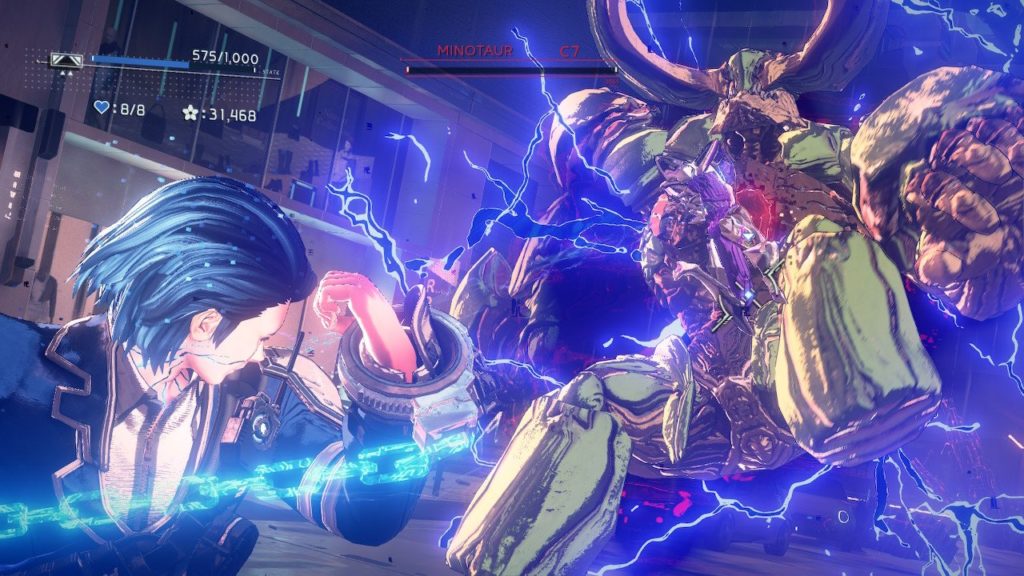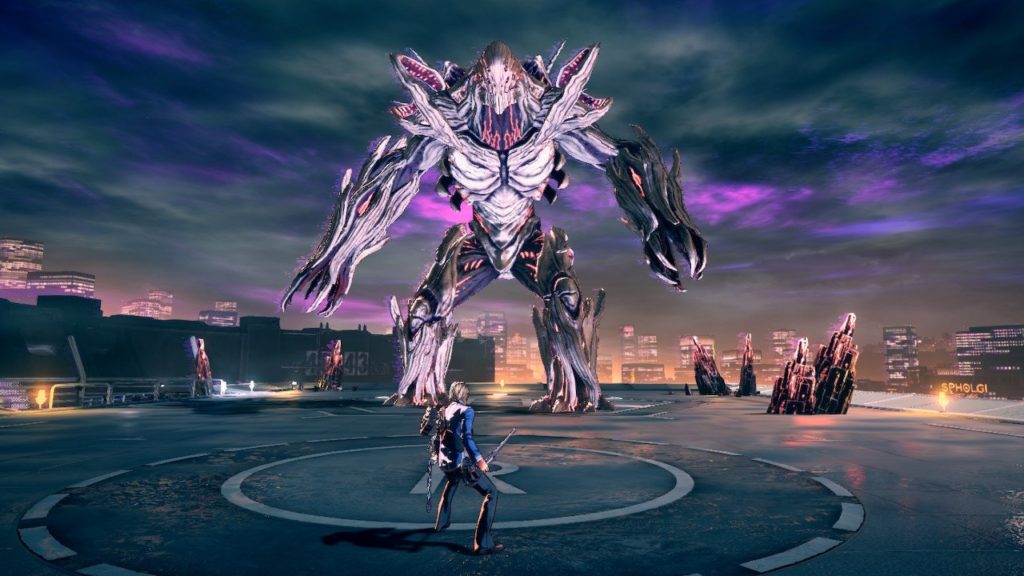Further Reading: Game Ramblings #64 – NieR: Automata
- Genre: Action/Adventure
- Platform: Switch
If you’ve played some of the recent games that Platinum has done, whether that was NieR: Automata or Bayonetta, or even something a bit older like Metal Gear Rising: Revengeance, you probably know roughly what to expect out of this one. Great action combat, over the top set pieces, a somewhat wild sci-fi story, and just enough anime tropes to not be annoying. In that regard, Astral Chain really isn’t any different. However, the combat in place shows a lot more finesse than I find typical of their games, while doing the rest of Platinum’s typical feature set as well as ever.

This game isn’t really a surprise from a setting perspective for Platinum. The tl;dr is that the world has gone through a near apocalypse, humanity is hanging on through a man-made island floating in the ocean, and demons constantly invade through portals into another dimension. This is all bits and pieces that Platinum has done before. Where they really lean into this is that the other dimensional beings are crucial to the combat, and that tie into the story is all they need to give you your core abilities that the game is centered around.

Right from the start, you’re given a controlled variant of these beings called a Legion. This is both a partner in battle, a practical RPG power curve element, and a way to hook into that story. Your ability to control Legions means you can see demonic corruption in the world (ties into XP gain), you can fight against the demons that are invading and enter portals into their dimension (main story hook), and gain some flashy as hell combat capabilities (let’s face it, this is because it’s cool as hell). All of this combined is super over the top levels of stupid, and damn does it work well. The game plays a fine line between being silly enough to be highly fun without crossing the line into boredom the entire time. In typical Platinum fashion, this ramps up slowly over time to give you bigger and badder set pieces and boss fights right until the end.

But let’s face it; combat is the most important thing going for this game. This has definitely got the usual run of hack and slash going on, but at its core that’s not really the most effective way to fight, and in practice there’s a lot of enemies that actively can’t be killed that way. Using the Legion is entirely the where combat ends up. The Legions sort of act on their own, but you’ve also got direct control over them. You can throw them towards and drag them through enemies. The chain that binds you to your Legions can be used to wrap up and stun enemies or trip enemies that are charging in your direction. Each type (Sword, Axe, Bow, Beast, Arm) have different special abilities that can be used as additional offensive or defensive capabilities both in combat and in environment traversal. Quick time events that flash up can also be used to allow your Legion to do combo attacks, defensive measures, and even parries against incoming enemy attacks.
All of this may sound complicated for a fast-paced action game, but it ends up having a really good flow to it. The Legion capabilities are all just different buttons on the controller, so you don’t have to do complicated things to activate them. It becomes more of a game of identifying weaknesses, having the right Legion out, and being ready to react when combat events are occurring. Rather than it becomes tedious to do all these things, different actions becomes second nature. A lot of this definitely comes down to fantastically well done combat tells – for example, charge attacks have a huge red line prior to attack to allow you to line up your chain trip, quick time events for parries have a visual flash and audio stinger as well as a bit of time dilation for extra activation time – but the combat pace is also really well balanced. It’s fast combat, but leans just slow enough to give you time to fairly react, allowing you to maximize damage output without turning into button spam.

By the end of the game, you end up just rolling through these things without stopping. That boss up there is only around the midway point of the game, so you can imagine how ridiculous it gets by the tail end of the game. I ended up finishing this one in about 25 hours, and there’s definitely some more to be pulled out of it. There’s multiple endings (also typical of Platinum titles), multiple difficulties, lots of side quests, cat collecting (!!!!! 11/10 game of the year), and generally just a lot of fun to be had. While I may not recommend getting a Switch for this one alone, if you’ve already got a Switch this should definitely be on your short list, at least until Bayonetta 3 comes out.
